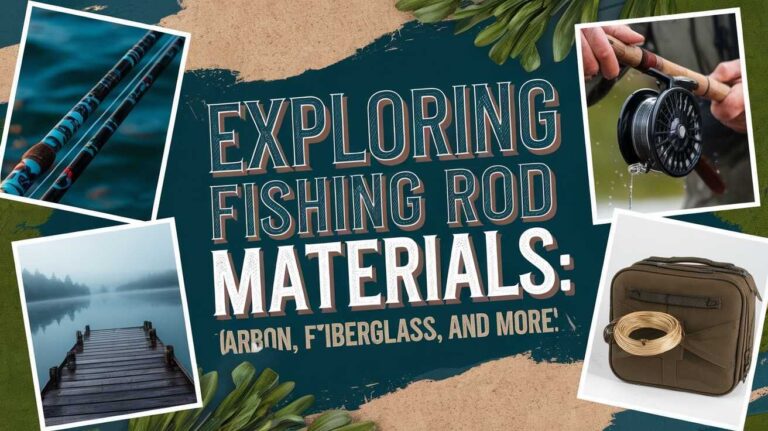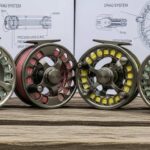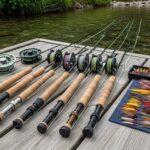I’ve been fishing for years, hauling my gear from local ponds to far-flung international waters, and let me tell you—there’s nothing worse than arriving at your spot only to find your prized rod snapped like a twig because you didn’t pack it right.
Transporting fishing rods safely while traveling isn’t just about tossing them in the backseat and hoping for the best; it’s a skill, a craft even, that can save you hundreds in repairs or replacements.
Whether you’re figuring out how to transport fishing rods in a car, on a plane, or even on the roof of your SUV, I’ve got the hard-earned wisdom to share. So, let’s dive into the nitty-gritty of keeping your gear safe, no matter where the fish are calling.
Why Safe Transport of Fishing Rods Matters More Than You Think
I get it; fishing rods aren’t cheap, and they’re not just tools but extensions of who we are as anglers. A busted guide or a cracked blank can ruin a trip faster than a thunderstorm.
Beyond the financial sting, there’s the emotional gut-punch of losing a rod you’ve landed monsters with. That’s why learning how to transport long fishing rods or even compact travel setups is non-negotiable.
Damage during transit isn’t just bad luck; it’s usually a sign of lazy prep. I’ve made those mistakes, and I’m here to ensure you don’t.
In-Vehicle Solutions: How to Transport Fishing Rods in a Car, Truck, or SUV

Securing Rods Inside Your Ride
Driving to your fishing spot is the most common way to haul gear, but it’s also where I’ve seen the most carnage. Let’s start with the basics of how to transport fishing rods in a car.
First rule: never leave lures attached. I’ve had a crankbait snag my car seat once—ripped the fabric and nearly took out an eye.
Remove all lures and crush those barbs before you even think about loading up. It’s not just about protecting your rod; it’s about keeping your vehicle (and yourself) intact.
For a quick fix, grab a turnbuckle and set it up between your front seats to create a crossbar. Rest the rod handles there, tips pointing to the rear. Got multiple rods? Tie them together at the last rings with string or Velcro straps to stop them from banging into each other.
If you’re dealing with longer rods that might tap the windshield, slide a rod sock or even a toilet paper roll over the tips. It’s not pretty, but it works. These little hacks have saved my gear on countless bumpy backroads.
Now, if you’re wondering how to transport fishing rods in a small car. When packing for a fishing trip, space is your enemy. Break down multi-piece rods if you’ve got them, and stash them along the side of the backseat or trunk with padding—think bubble wrap or old towels.
No room to lay them flat? Invest in a compact travel rod with individual pockets to keep the rod secure during transport. They’re a game-changer for tight spaces.
For those with bigger rigs, how to transport fishing rods in an SUV or truck opens up more options. SUVs often have enough length to lay rods flat in the back, but don’t just toss them in.
Use a system like the Rod Rig that mounts in the rear without stressing delicate sections. Trucks are even better—bed storage with a hard case keeps rods out of sight and secure. Just make sure they’re not sliding around; tie them down or use foam padding to prevent movement.
Roof-Mounted Options for the Adventurous

If your interior is packed, let’s talk about how to transport fishing rods on the roof of a car or on a roof rack. I’ll be honest—roof racks make me nervous when I think about how to transport your fishing gear safely.
One wrong move, and your rod’s exposed to wind, rain, or a low-hanging branch. But done right, they’re a solid option. Brands like Thule offer padded fishing rod racks that lock your gear in place, even on rough terrain.
I’ve used these on long hauls, and the stability is legit—no rattling, no damage. Just double-check the straps before you hit the highway, and never leave rods fully rigged up there unless the system is designed for it. A loose line flapping at 60 mph is a disaster waiting to happen.
RV Owners: You’ve Got It Made
If you’re rolling in an RV, consider yourself lucky for having ample space to keep the rod safe. Figuring out how to transport fishing rods in a truck or RV setup is a breeze with pass-through storage compartments.
These spaces are perfect for rods of all sizes, letting you haul multiple setups without sacrificing interior room. Pair that with a durable, waterproof rod-carrying case, and you’ve got the ultimate setup.
I’ve stuffed cases into RV storage on week-long trips, and the easy access from both sides means I’m not digging through a pile of gear at 5 a.m. to find my favorite setup. It’s the kind of convenience I dream about on cramped car trips.
Air Travel: How to Transport Fishing Rods on a Plane Without Losing Your Mind

Flying with fishing rods is where things get dicey. I’ve had airline staff give me the side-eye over my gear more times than I can count, so let’s break down how to transport fishing rods on a plane without a meltdown.
First, research your airline’s policies—print them out if you can. Most U.S. carriers count two rods, two reels, and a tackle box as “one piece” of fishing equipment, often exceeding standard size limits (up to 115 inches linear).
But expect to pay oversized fees, and don’t even think about items over 70 pounds unless you’ve cleared it ahead of time.
Packaging is everything. Airlines want rods in cylindrical containers that can handle rough baggage handling. Hard-sided cases are my go-to—they’re heavy, sure, but they’ve saved my rods from being crushed in cargo holds.
Pad the inside with foam or bubble wrap, especially around guides and tips. And for the love of all things fishy, document your gear with photos before you pack. If something breaks, you’ll need proof for claims, especially if you’re using a rod tube.
I also recommend extra insurance beyond the airline’s measly liability limits—trust me, it’s worth the peace of mind.
For international trips, check destination-specific rules. Some countries have weird restrictions on fishing gear, and the last thing you want is your rod confiscated at customs. A little homework goes a long way.
Shipping Fishing Rods: When You Can’t Carry Them Yourself
Sometimes, you’ve gotta ship your gear ahead. Figuring out Learn how to ship fishing rods securely using a rod tube for protection. It isn’t cheap, but it can be safe if you do it right. USPS is the budget option, but they cap length at 97 inches—fine for multi-piece rods, not so much for one-piece giants.
For longer gear, UPS or FedEx are your best bet, though costs can hit 120 to Costs can vary from $100 to $300 depending on distance and speed when you transport your fishing gear. I’ve shipped rods both ways, and while USPS is cheaper, FedEx’s tracking gives me less anxiety.
Prep is critical. Disassemble multi-piece rods to cut down on length and cost when fitting them in your truck bed. Use a rigid tube—PVC or heavy cardboard—that extends at least 5cm past each end of the rod for a buffer zone.
Wrap the rod in bubble wrap inside the tube, focusing on delicate spots like the tip and guides. Seal it with heavy-duty tape, label it “Fragile” and “Fishing Rod,” and get insurance if it’s valuable.
I’ve had a rod arrive with a dented tube but intact gear, thanks to this method. Take photos before shipping, too—evidence is your friend if things go south.
Public Transport and Trains: Compact Is King
If you’re on a train or bus, space is tight, and you’ve gotta adapt. Amtrak, for instance, allows fishing rods as carry-ons if they’re under 50 pounds and within 28” x 22” x 14” dimensions. Bigger gear? Check it where baggage service exists.
I’ve hauled rods on trains, and compact travel rods that break into multiple pieces are a lifesaver. They fit in overhead bins or under seats without drawing glares from fellow passengers. Pad the sections with foam to avoid abrasion, and you’re golden for your fishing trip.
Protective Gear: The Unsung Heroes of Rod Transport
Let’s talk cases because they’re the backbone of safe transport. Hard cases with rigid shells and soft linings are my top pick for maximum protection—perfect for air travel or long car trips.
Travel rod rolls are lighter and great for squeezing into tight spots, but I’ve had sections slip out when I didn’t secure them right. Travel bags, especially padded ones, strike a nice balance; they keep rods organized and cushioned without the bulk of a hard case.
For frequent travelers, multi-piece travel rods from brands like Shimano or St. Croix are worth every penny. They break down into 2-5 pieces, fitting into suitcases or small compartments.
I’ve got a 4-piece rod that’s traveled with me globally, and it performs just as well as my one-piece setups. Pair it with a good case, and you’re set for any adventure.
Universal Tips to Prevent Damage, No Matter the Method
Wherever you’re headed, some rules apply across the board. Always separate rod sections with padding to stop scratches.
Remove reels or secure drag settings and cover exposed parts to avoid tangles. If you’re storing multiple rods together, stagger lengths or use individual sleeves to prevent guide-to-guide contact—broken inserts are a pain to fix.
For long-term storage, loosen reel drags to preserve spring tension. And when you arrive, have a setup routine. Pre-rig leaders if you can, and practice assembly with multi-piece rods before the trip. I’ve cut my setup time in half by organizing gear in a rod holder for quick access.
My Take: Invest in the Right Gear and Prep Like Your Trip Depends on It
Here’s my unfiltered opinion: if you’re serious about fishing, stop cheaping out on protective gear. A quality hard case or a dedicated travel rod isn’t just a luxury; it’s a necessity.
I’ve lost rods to half-assed packing, and the regret stings worse than the cost of a good case. Whether you’re figuring out how to transport 2-piece fishing rods or hauling a quiver of long poles, preparation is everything.
Balance protection with convenience, know your carrier’s rules, and don’t skimp on padding. Do that, and you’ll spend more time fishing and less time cursing over broken gear.
FAQs: Your Burning Questions on Transporting Fishing Rods
What’s the best way to transport fishing rods in a small car?
Stick to multi-piece rods that break down easily, and use a compact travel rod roll or padded bag. Lay them along the backseat or trunk with extra padding like towels to prevent movement.
2. How do I transport fishing rods on a plane without damage?
Use a hard-sided cylindrical case, pad the inside with foam or bubble wrap, and check airline policies for size and weight limits. Document your gear with photos and consider extra insurance for valuable rods.
3. Can I transport fishing rods on the roof of my car safely?
Yes, with a proper roof rack system like those from Thule. Ensure rods are secured with padded mounts and straps, and avoid leaving them fully rigged unless the system supports it.
4. What’s the cheapest way to ship fishing rods?
USPS offers the most budget-friendly rates but limits length to 97 inches. For longer rods, UPS or FedEx costs more (120−300) but handles oversized items better. Always use a rigid tube and ensure valuable gear.
5. Are multi-piece travel rods worth it for frequent travelers?
Absolutely. They break down into smaller sections for easy packing in suitcases or tight spaces, and top brands offer models that don’t sacrifice performance. Pair them with a good case for the best results.
There you have it—everything I’ve learned from years of trial, error, and a few broken rods. Transporting fishing rods safely while traveling doesn’t have to be a headache if you’ve got the right approach. Got a specific setup or trip in mind? Drop a comment, and I’ll weigh in with tailored advice.











